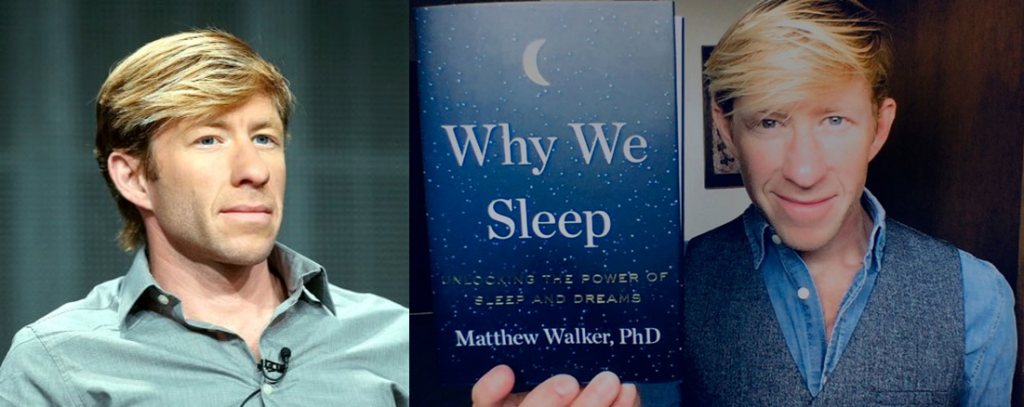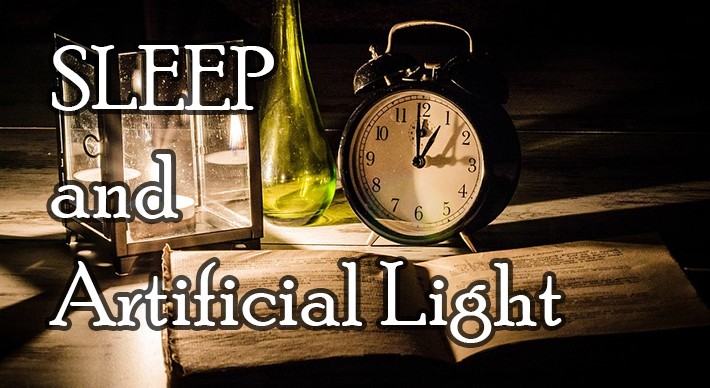We’re equipped to withstand famine. That’s what fat cells are for–a mechanism to store calories for the future. In the 1960’s, a 456-pound man named Angus Barbieri fasted for 382 days. He lost 276 pounds and weighed 180 after his doctor-supervised fast, which only comprised of water and vitamins. He was totally fine.
In contrast, we’re not equipped to withstand sleep deprivation. Our bodies don’t have a sleep bank where we can store extra hours of sleep in case we have to pull an all-nighter later. That’s not how sleep works.
Artificial light is disruptive to our sleep, and therefore harmful to our health. That’s because for most of our evolution, we were not chronically exposed to artificial light. On a mass scale, most humans have only been chronically exposed to powerful artificial light for less than one hundred years. Because of this, our bodies never evolved the mechanisms to offset the detrimental effects of night-time artificial light. Artificial light at night disrupts our sleep and wrecks havoc on our health, attractiveness, and performance both physically and mentally.
In this article, I will chronicle the different types of artificial light sources that humans have used throughout history, and explain why–despite having mastered fire about 126,000 years ago–our true exposure to artificial light has only been less than 100 years.
How long has human sleep been disrupted by artificial light?
Throughout most of our evolution as a species, artificial light did not exist.
Our bipedal ancestors began walking the Earth six million years ago, starting with the Ardipithecus group. Modern humans came into the picture of evolution around 200,000 years ago.
For most of our 6 million years of evolution as a species, we did not have easy access to powerful artificial light.
Fire and Sleep


Around 125,000 BC, humans learned to control fire. Although fire is technically artificial light, I wouldn’t consider it disruptive to sleep. If you’ve ever gone camping, you’d agree that a campfire is not intrusive to sleep. In fact, most survivalists would argue that a crackling campfire is more comforting and relaxing than insomnia-inducing, as fire wards off bugs and predatory animals. This gives you a sense of security, which reduces the type of anxiety that can keep you awake.


Oil lamps, which are similar in brightness to a 60-watt incandescent bulb, were invented around 4500 BC. Candles were invented around 3000 BC.
However, these two sources of artificial light were tedious and/or expensive to use during those time periods, so it’s unlikely they contributed to insomnia on a mass scale. While some wealthy people may have been kept up by these sources of artificial light, most of the world was still rising and setting with the sun on most nights.
Electric Artificial Light and Sleep


In the 1800’s, the light bulb was invented. But most people didn’t use them, at first. That’s because they were too expensive and burned out much more quickly than today’s light bulbs. Also, most people didn’t have access to the electrical grid. For instance, in 1925, only half of all homes in the U.S. had electric power. So clearly, most humans still weren’t chronically exposed to around-the-clock artificial light during that time.
“Common use” matters more than “date of invention”
To figure out how long artificial light has been disturbing human sleep on a mass scale, we’d have to look forward to when lightbulbs, TVs, computers, and smartphones came into common use – not just when they were invented.


In 1955, half of all U.S. homes had a black-and-white TV.
In 1965, most of prime-time programming began broadcasting in color. Soonafter, color TVs became increasingly-popular in American households.
Prime Time TV in the 1960’s is the turning point of sleep disruption from artificial light for modern societies
U.S. prime time television airs between 8:00 p.m. to 11:00 p.m. Eastern Time, which is well past sunset. Therefore, I’d say that the late 1960’s was the turning point where artificial light began to wreck havoc on human sleep on a mass scale, at least in modernized societies like the U.S.
Prior to the popularization of television, it was still a personal lifestyle choice if you wanted to go to the local bar, or stay up late to read and expose yourself to artificial light. But with the advent of the television, the topics people began to talk about the next day at work or school began to revolve around what happened on TV the night before, and those shows were often broadcast after the sun had set. This exerted an ever-increasing pressure on people to stay up later.


Computers, Laptops, and Sleep Disruption
Although the laptop was invented in 1981, it looked like this:


…and weighed 24 pounds.
Therefore, I wouldn’t consider the above laptop – the “Osborne 1” – or other similarly heavy and clunky laptops as being a “common use” laptop.
Computers and laptops became increasingly common in people’s homes starting in the 1990’s.
In my view, the dawn of consumer-use laptops started in 1991 with Apple’s five-pound Powerbook 100, with personal computers and laptops becoming more commonplace in the average American household after the launch of Microsoft’s Windows 95 operating system.


Smartphones


Early smartphones such as IBM’s Simon Personal Communicator in 1992 only had a battery life of one hour, so in comparison to modern smartphones with bright screens, they were a lot less of a sleep disruptor.


In 2007, Blackberry launched the Curve 8300 and Apple launched the first iPhone. Prior to these models, cell phones were a lot more suited for talking rather than browsing and messaging on like we do today.
Since then, smartphones and other electronic devices have only gotten more advanced, compelling, and disruptive of our sleep.
These days, it is common practice for companies to provide their employees with company smartphones. This keeps workers tethered to their job, even after they’ve gone home, which is highly disruptive to sleep and health.
Aside from work, the level of entertainment we have access to on our electronic devices has become more compelling than ever. Video games, on-demand streaming services like YouTube and Netflix, and social media make it harder for us to wind down for bed after the sun has set.
And all this has only been around for less than two decades!
As a species, humans have only been exposed to powerful artificial light on a mass scale for less than 100 years.
Therefore, it’s safe to conclude that our bodies haven’t had enough time to evolve mechanisms to withstand or cope with modern artificial light.
In our six million years of evolution, we have only been exposed to sleep-destroying artificial light on a widespread basis for only 60 years.
This is not enough time for our bodies to have evolved workarounds for the lack of sleep.
Learn More About Sleep


Matthew Paul Walker, 45-46 years old as of 2019.
In bestselling 2017 book that was recommended as a top 5 read for the 2019 holiday season by Bill Gates, Why We Sleep: Unlocking the Power of Sleep and Dreams, neuroscience researcher and professor (Harvard and Berkeley) Matthew Walker shares 20+ years of ground-breaking research on sleep. It is the most modern, updated resource on sleep available today. Read my review here.

